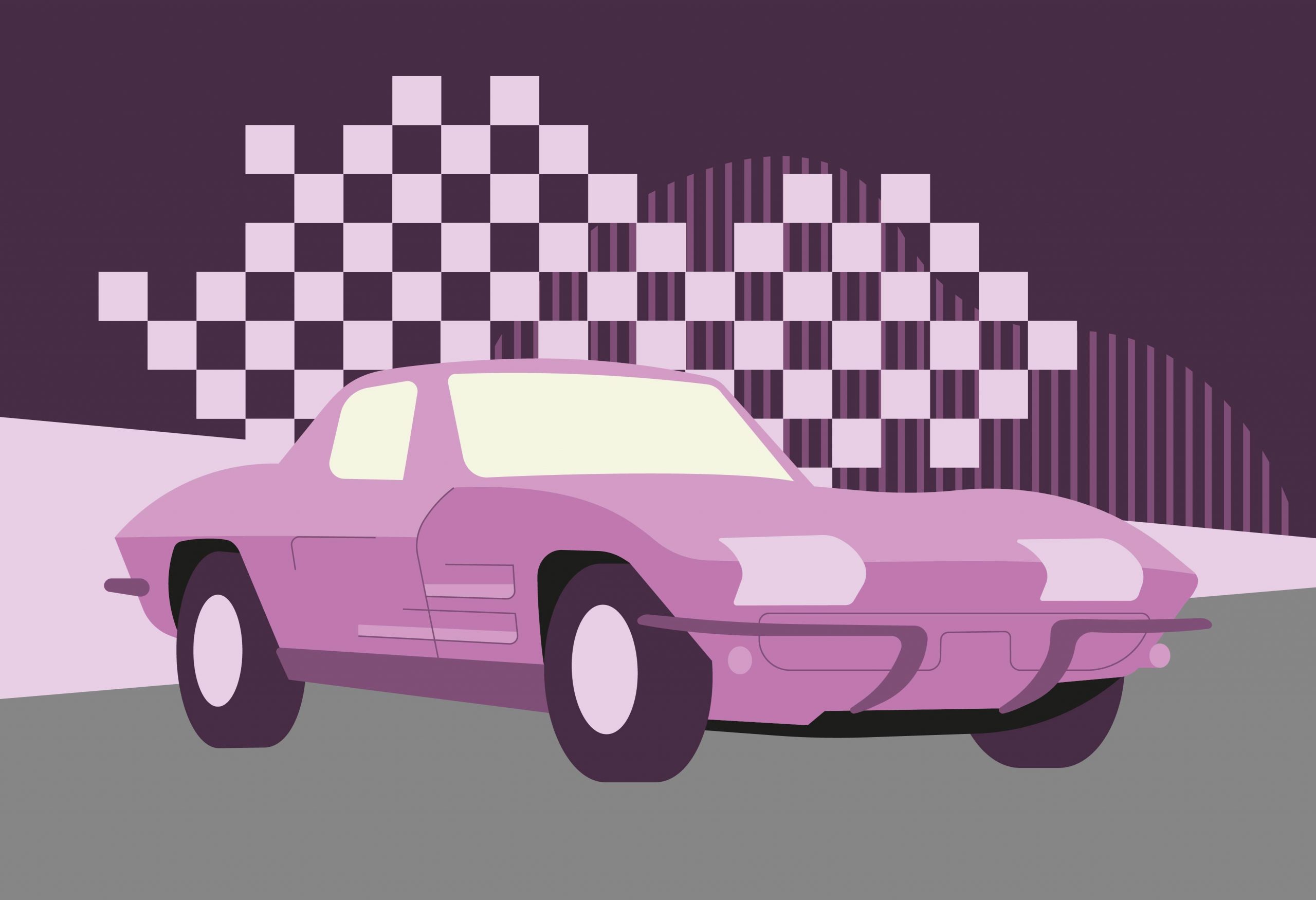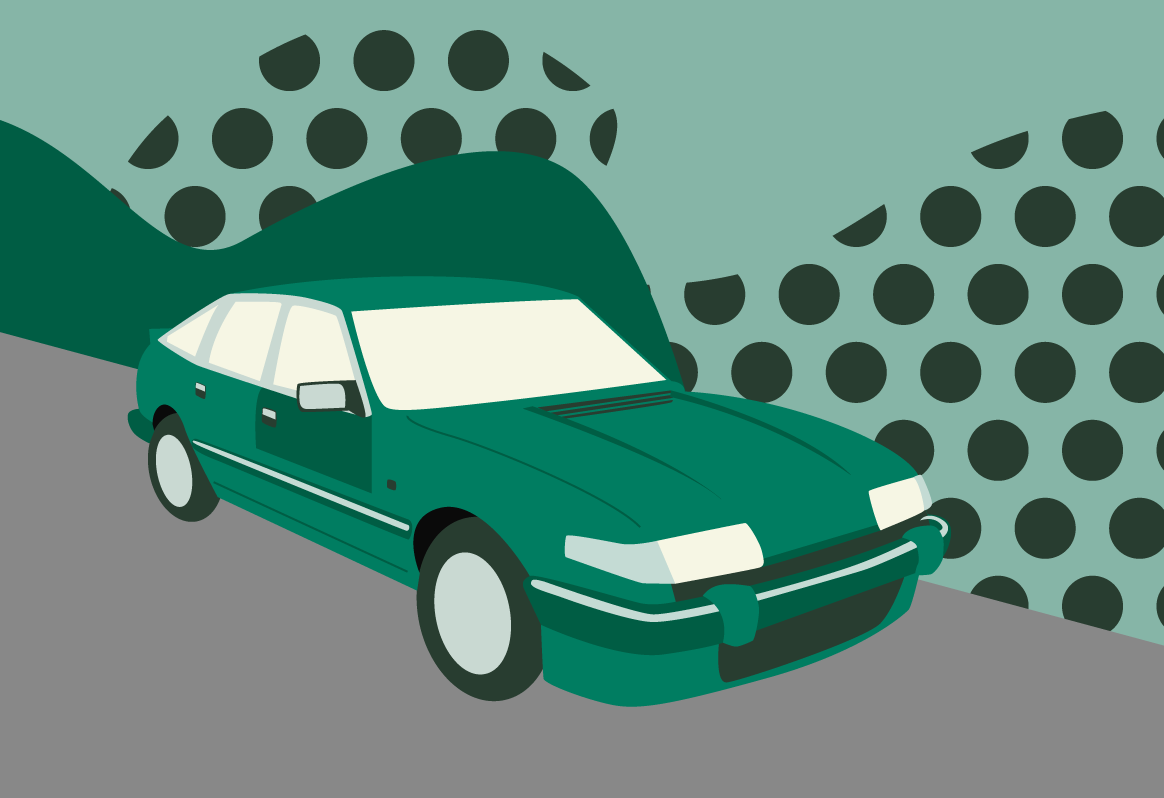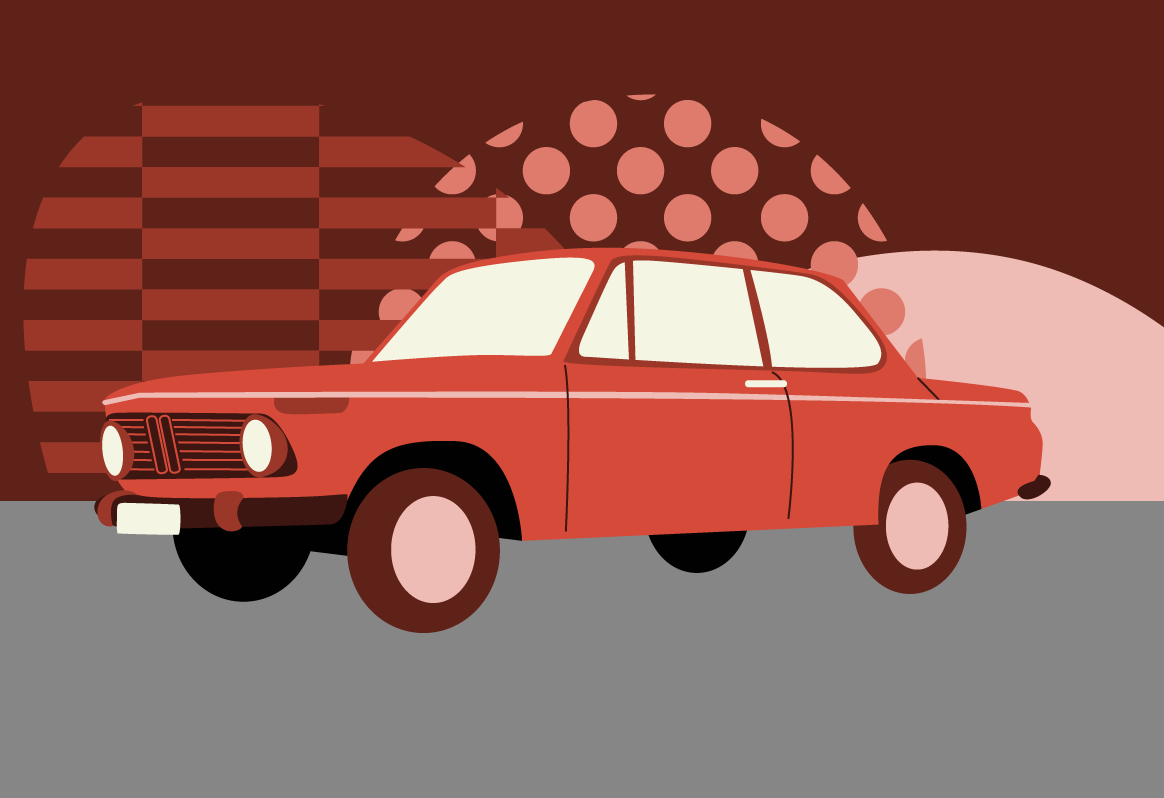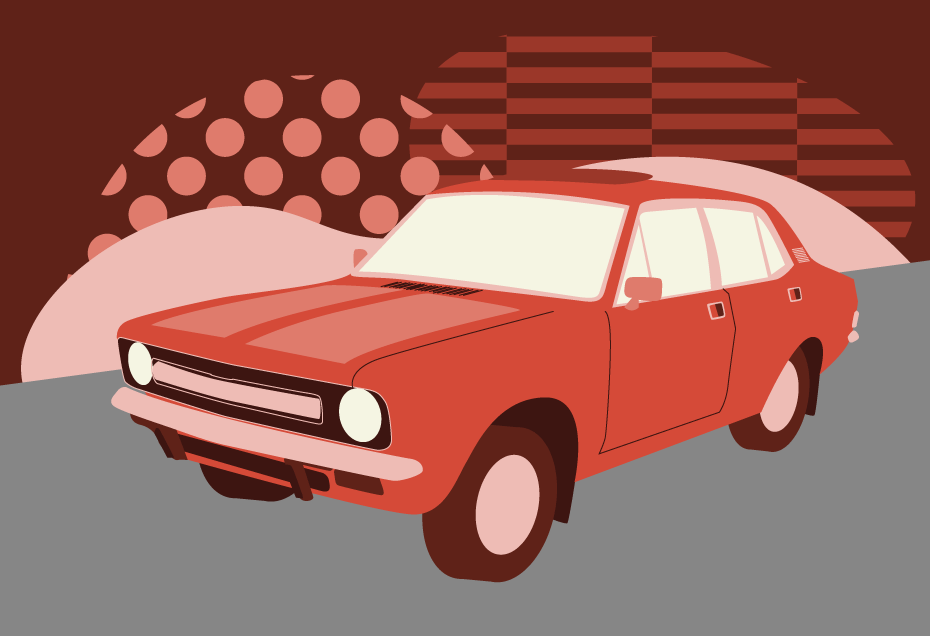If the Chevrolet Corvette changed the landscape for American sports cars in the 1950s, the Sting Ray version that followed propelled it into the Sixties in a blaze of glory.
Technical advances made the car lighter, faster and better handling than its predecessor, while its extravagant design led to lengthy waiting lists at Chevrolet dealers.
We looked at the history of an American legend.
The Corvette C2, known as the Sting Ray, can trace its roots to two projects – the Q-Corvette, and General Motors stylist Bill Mitchell’s racing Sting Ray.
Both projects date from the late 1950s, when the Corvette C1 was coming of age thanks partly to the work of Russian emigre engineer Zora Arkus-Duntov.
Mitchell, who had been impressed with Italian car design at the 1957 Turin Auto Show, showed pictures of his findings to the GM design team to influence the styling of the Q-Corvette.
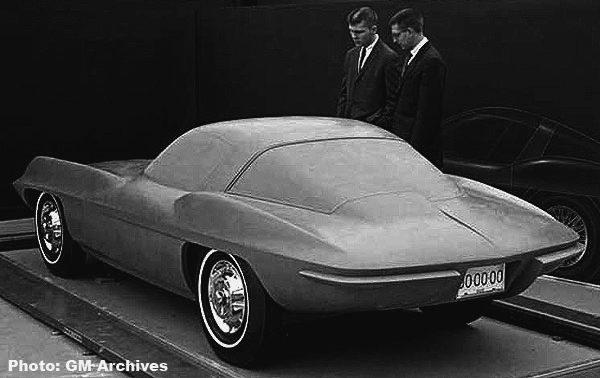
The expensive Q-Corvette project was ditched in 1958, but Arkus-Duntov had already created the Corvette SS racing sports car, intended to compete under the GM banner in the 24 Hours of Le Mans.
Unfortunately, the Automobile Manufacturers Association (AMA) banned manufacturer-sponsored racing, and the SS was confined to the test track.
But Mitchell, who felt the Corvette should have a racing heritage, was undeterred, and used a Corvette SS tubular steel space frame chassis as the basis for a new racing car, with a rakish new body penned by stylist Larry Shinoda.
Birth of the ‘stingray’
A keen deep-sea fisherman, Mitchell named his racer after the ‘stingray’, with Arkus-Duntov leading the engineering work.
The car was ready in 1959, with the AMA ban forcing Mitchell to race at his own expense, with no GM, Chevrolet or Corvette branding.
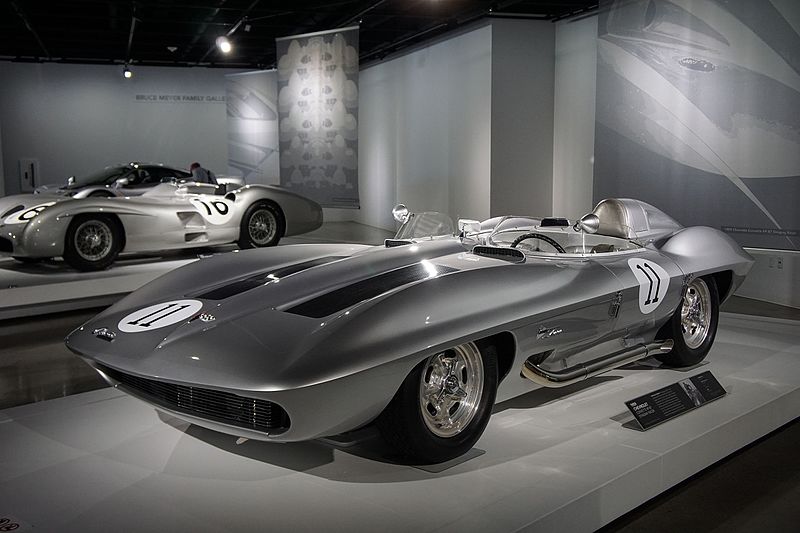
He hired the so-called ‘flying dentist’ Dr Dick Thompson to race it, winning the Sports Car Club of America’s C-Modified national championships in 1960.
Under pressure from GM, Mitchell withdrew the car from racing, instead lightly modifying it for road use and exhibiting the car at shows across the country.
Elements of the design found their way into project XP-720, the design programme that led directly to the 1963 Corvette Sting Ray.
Unlike the C1, the Sting Ray was to come in coupe as well as convertible form, with the coupe featuring a split rear windscreen.
The final design was a huge departure from the original Corvette, a true statement car that took the motoring world by storm.
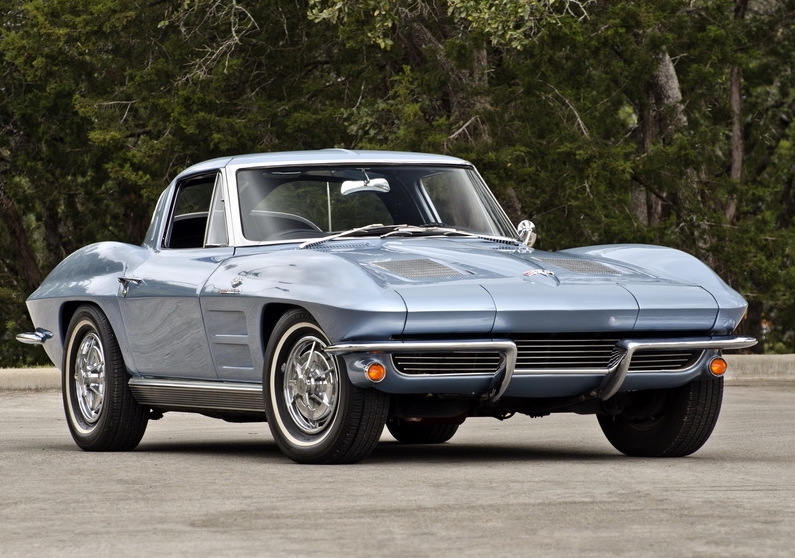
For the first time, a wind tunnel was used in the final design of the Corvette, dramatically improving the car’s aerodynamics over its predecessor.
Its independent rear suspension was a first for a modern American car, providing vastly superior ride and handling over its predecessor.
The quad headlamps were hidden beneath the sharp-edged front end, for the first time since the 1942 DeSoto.
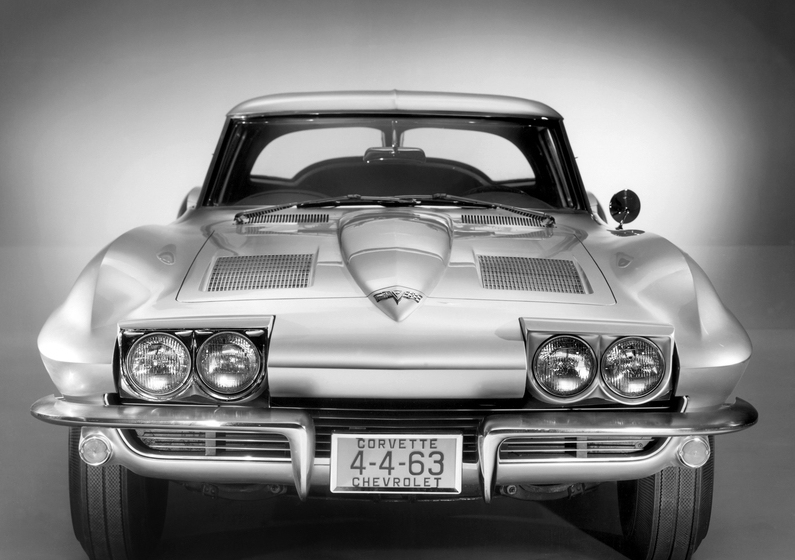
While at first glance, this was a completely different Corvette, the drivetrains were carried over from the C1, comprising 327cu in carbureted engines rated at 250hp, 300hp, and 340hp, and a 360hp fuel-injected V8.
Standard transmission was a three-speed manual, with a favoured option the four-speed Borg-Warner manual, or a two-speed Powerglide auto box.
Sting Ray at launch
When it was launched in 1963 the Corvette Sting Ray shook the motoring world, its futuristic creased design sending customers flocking to their Chevrolet dealer.
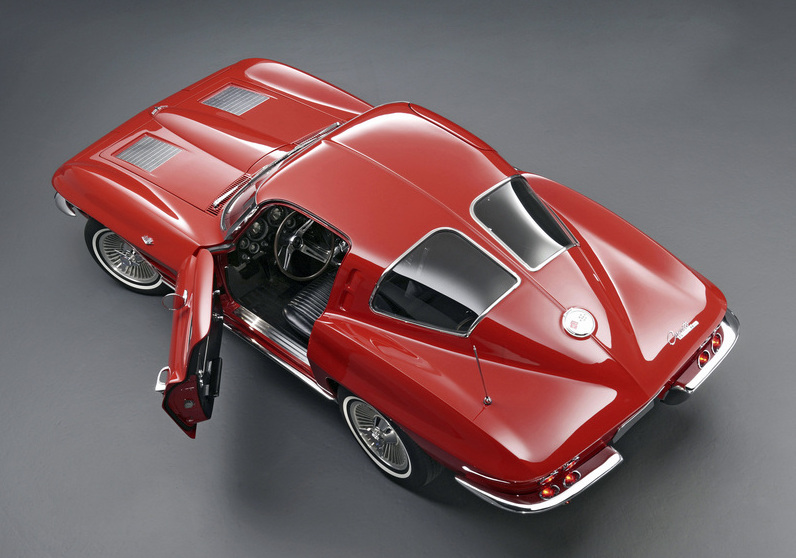
But it wasn’t just the design that had motorists drooling – the car’s handling thanks to its new, all-independent suspension, had completely been completely transformed.
Car & Driver magazine hailed it as ‘incredibly close to perfection’ on smooth roads, with a feeling of ‘sheer astonishment’ when cornering ‘in perfect balance’.
Compared with previous Corvettes, the Sting Ray scored highly in almost every area – performance, handling, ride comfort, habitability, and boot space.
The magazine wrote that the car ‘stands out from its European counterparts as having in no way copied them but arrived at the same goal along a different route’.
Indeed, Arkus-Duntov said that ‘for the first time, I now have a Corvette I can be proud to drive in Europe’.
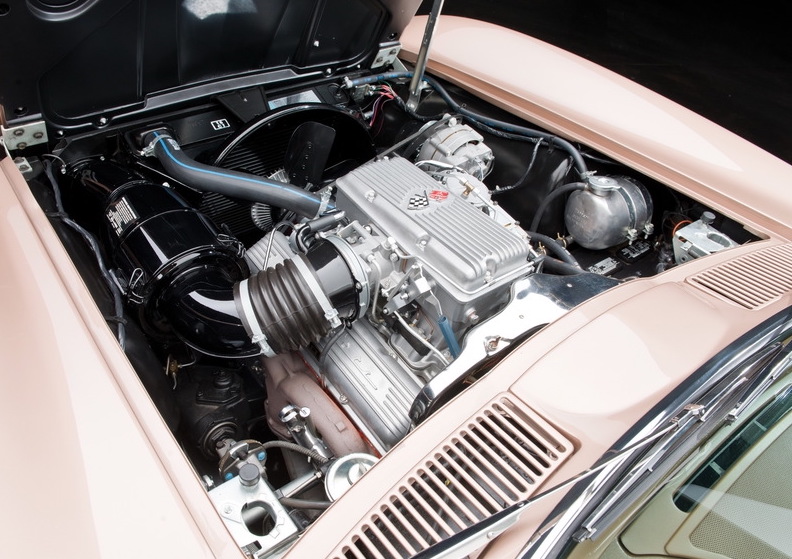
So what did the motoring press make of it in Europe?
Autocar called it ‘a curious mixture of American and European concepts of what a genuine gran tourismo car should be’.
Perhaps protective of the ‘home’ cars, the magazine pointed out that at 146mph, the Sting Ray was slower than the Aston Martin DB4 Zagato, and the Jaguar E-Type, both capable of 152mph – despite both cars having less power on paper.
They conceded, however, that the Corvette hit 120mph considerably faster than the E-Type.
The car’s refinement – particularly in engine and transmission noise – was sub-par, while some of the American styling points, such as dummy grilles and air vents, ‘appear unnecessary’.
Summing up, Autocar believed the US manufacturers were still behind the Europeans in building a car ‘combining real performance and refinement’.
Corvette sales success
No matter what the British motoring press said, the Corvette Sting Ray was a roaring success in the States, with sales jumping from 14,531 in 1962 to 21,513 in 1963 (10,594 coupes and 10,919 roadsters).
As well as their stunning looks, the Sting Ray had a wider appeal than earlier Corvettes thanks to optional power steering, power brakes, leather seats, and air conditioning, while early cars had an AM radio (later AM/FM).
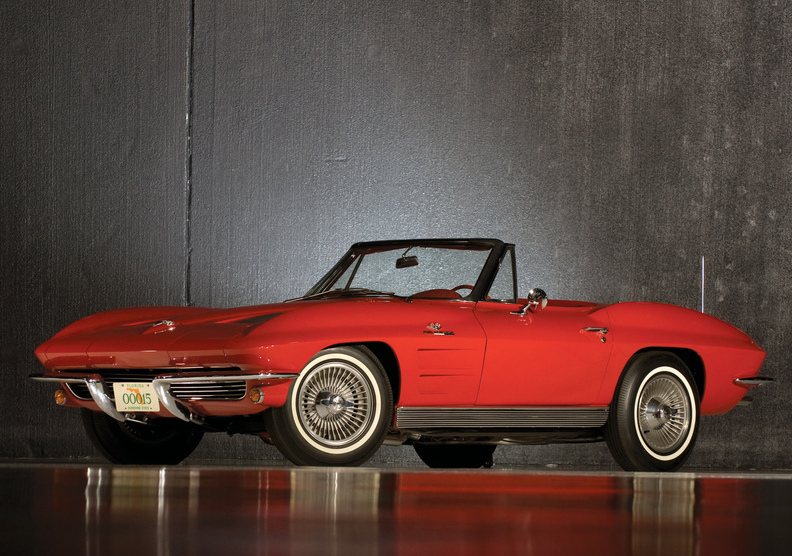
The split rear window coupes lasted only a year, to the relief of Arkus-Duntov, who felt they impeded rear vision, but these early cars now carry a huge price premium.
For the first time on a Corvette, a special performance package was available, the race-prepped RPO Z06, at an additional cost of $1,818.45. These cars, 199 of which were made in 1963, came to be known as the ‘Big Tanks’ because of their oversized racing fuel tanks.
The Z06 was fitted with the 360hp, L84 fuel-injected V8 engine, a four-speed, close-ratio manual transmission and a Positraction rear end, as well as oversized, finned steel brake drums with internal fans and a unique dual-circuit, vacuum-boosted master cylinder.
There were also heavy-duty shocks and springs, and a larger front anti-roll bar, which all added up to a car that could compete with Europe’s best on road courses and hit the 14s mark on the strip.
A handful of early cars were ready to race in the Los Angeles Times Grand Prix at Riverside in October 1962, Doug Hooper emerging victorious in the car’s first event.
Like our illustration of the Chevrolet Corvette: the Sting Ray years at the beginning of the article?
Download a free high-quality poster version here.
Evolution of the Sting Ray Corvette
For 1964, the Sting Ray’s high-performance engines gained 15hp, and sales hit another new Corvette record, up to 22,229, although a higher proportion of those were now convertibles.
The car’s styling was smoothed out for 1965, with the hood now devoid of scoop indentations, but what happened under the bonnet was far more noteworthy.
The introduction of the Big-Block 396cu in engine gave the Sting Ray a whopping 425hp, effectively calling time on the more expensive Rochester fuel-injected unit.
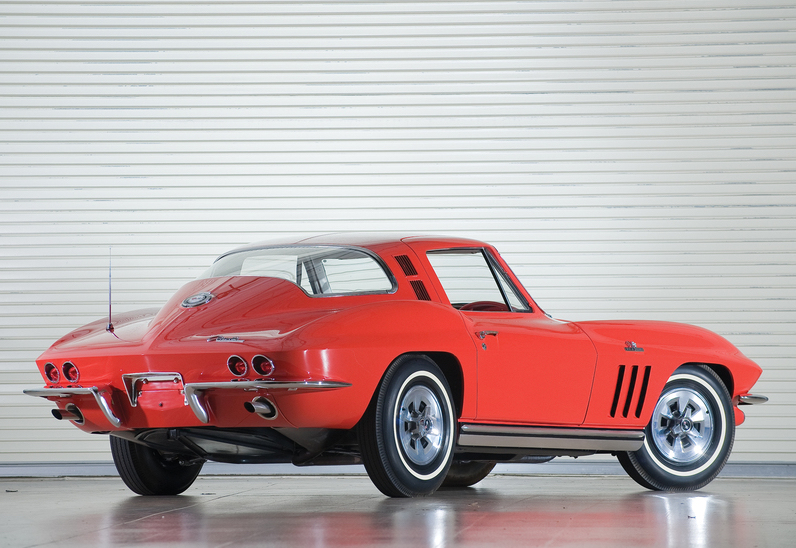
To help stop this more powerful Corvette, four-wheel disc brakes were introduced, with drum brakes still available as a $64.50 credit. Only 316 out of 23,562 buyers took up the cheaper drum option.
For 1966, two big-block variants were available, the previous year’s 396 and the mighty 427, officially still rated at 425hp but packing 460lb ft of torque. It’s thought that the power was deliberately under-reported so as not to frighten insurers, and to allow the cars to qualify for lower NHRA brackets based on horsepower and weight.
With demand for the small-block engines on the wane, options were cut from five engines to two, the 300hp and 350hp units.
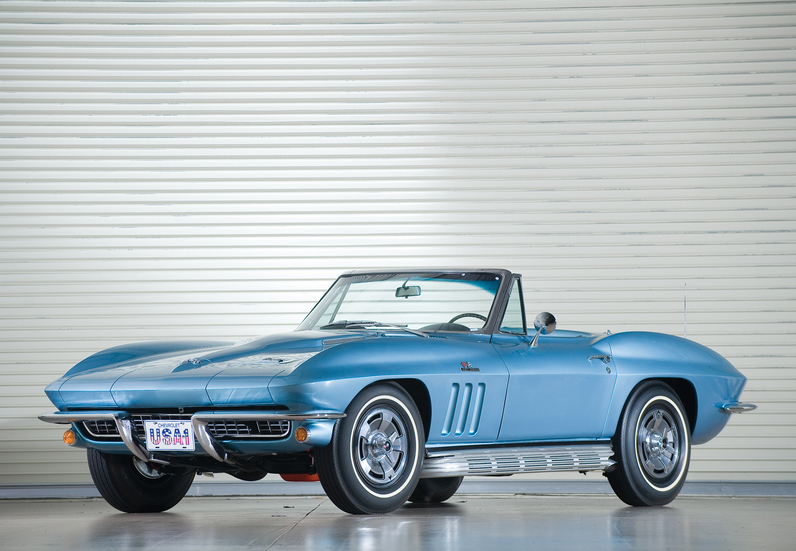
Sales were up once again, this time to another record of 27,720.
The last of the C2 Sting Rays was manufactured in 1967, and it went out with a bang thanks to the ultimate C2 engine – the infamous L88 427, as close to a racing engine as Chevrolet had offered in a road car.
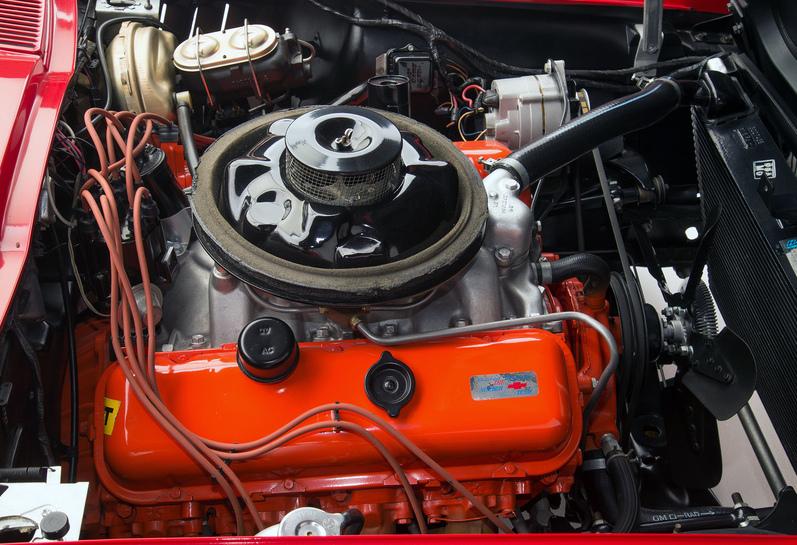
It came with lightweight heads and bigger ports, a super-hot camshaft, a 12.5:1 compression ratio, and a single massive Holley carburetor.
All of this added up to an official 430bhp, but the true power was thought to be closer to 560bhp at 6400rpm, and Chevrolet made some factory options mandatory on the car, including the Positraction differential, heavy-duty suspension, and power brakes.
They also tried to deter owners using the car on the street by deleting the heater and radio options…
At $1,500 over the base price of $4,240, only 20 buyers took up the L88 option, while sales were down on previous years as buyers waited for the following year’s launch of the C3.
Exit Sting Ray, enter Stingray
The third generation Corvette C3 was modelled on the Mako Shark II concept car, designed by Larry Shinoda in 1964, with some of the more ‘out there’ styling notes toned down for the production car.
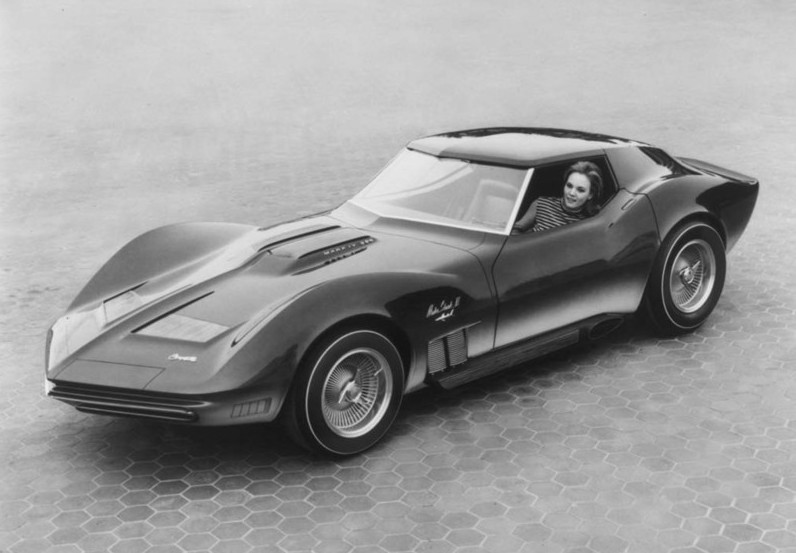
Nevertheless, the Stingray – now one word and not two – had a more muscular appearance than the outgoing model, though the chassis, independent suspension, and disc braking systems were all carried over.
The engine line-up was also the same as the C2, but with a new optional Turbo Hydramatic 3-speed auto box replacing the 2-speed Powerglide.
Cars were again offered as a convertible, with an optional hard-top, or a coupe, which featured removable T-top roof panels and rear window.
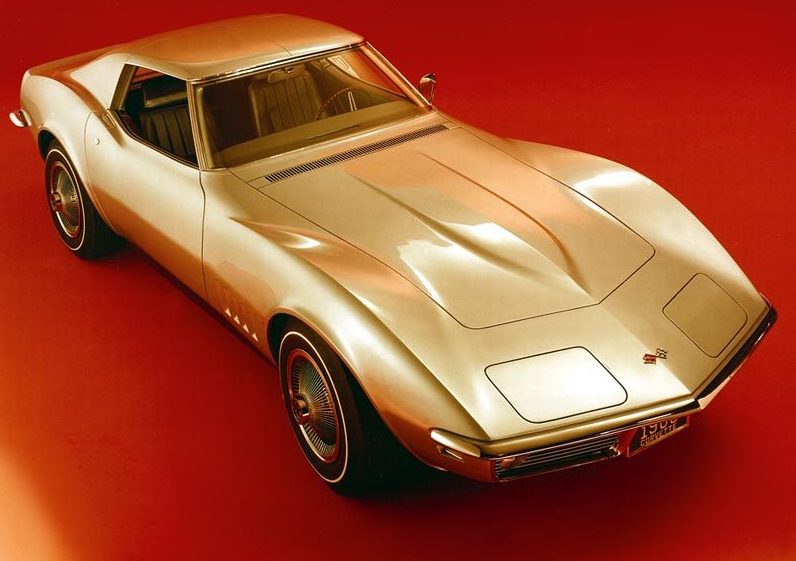
The first engine change was an increase in displacement for the small block in 1969 from 327cu in to 350cu in, although the power output was unchanged.
Testing the 427 coupe in May 1968, Car and Driver magazine described the new Corvette as “exciting, it’s lusty, it stimulates all of the base emotion lurking deep in modern man”.
“It’s a brutal, masculine looking machine,” it continued. “The shape doesn’t whisper, it bellows power.”
Despite criticising some of the quality aspects of the test car, carpets and plastic, the paint finish, C&D was still convinced the Corvette was better suited to the American scene than European rivals like the Jaguar E-Type, Porsche 911, or Toyota 2000GT.
“The Corvette is not a copy of anything,” it wrote. “It produces a whole new set of emotions in its beholders. It’s American and no other description begins to capture it. It’s big and why not? “Mechanically it feels unbreakable and it delivers a full measure of performance that its competitors can’t match at double the price. Handling is impeccable, limited only by street tires, and the Corvette’s pitch and float-free ride is ideally suited to high speed touring on American highways.
“All of these automotive delectations are wrapped up in a package so boldly styled that no one can ignore its existence. The Corvette is a brilliant car with all of the virtues and all of the vices of American technology. On balance, it’s an almost irresistible temptation to buy American.”
From muscle car to sports tourer
Changes for 1970 included an eggcrate grille with matching front fender side vents, larger squared front directional lamps, and fender flares built into the body contours.
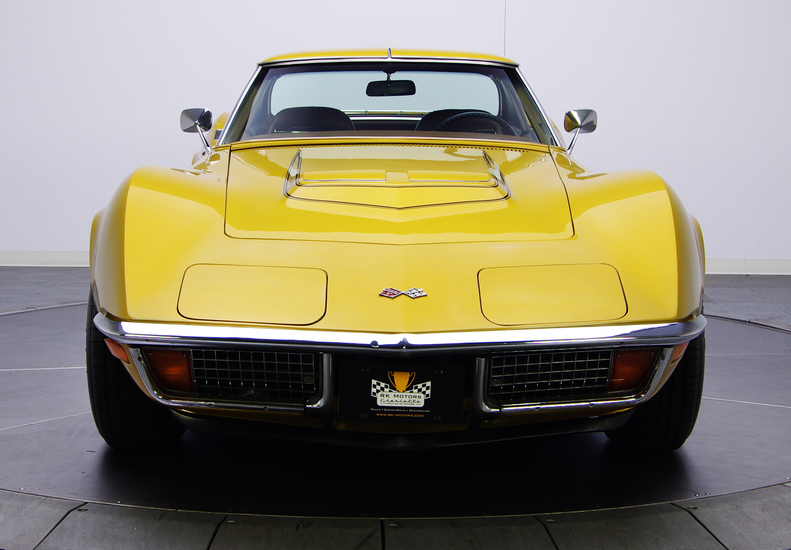
There was a newly-offered LT-1 engine, a 350cu in 370bhp V8 that was timed at 14.4 seconds for the quarter mile.
Motor Trend magazine compared the performance favourably with the much more expensive Porsche 911.
These LT-1 cars could be bought with a special ZR1 package that provided racing suspension, brakes, and stabiliser bars.
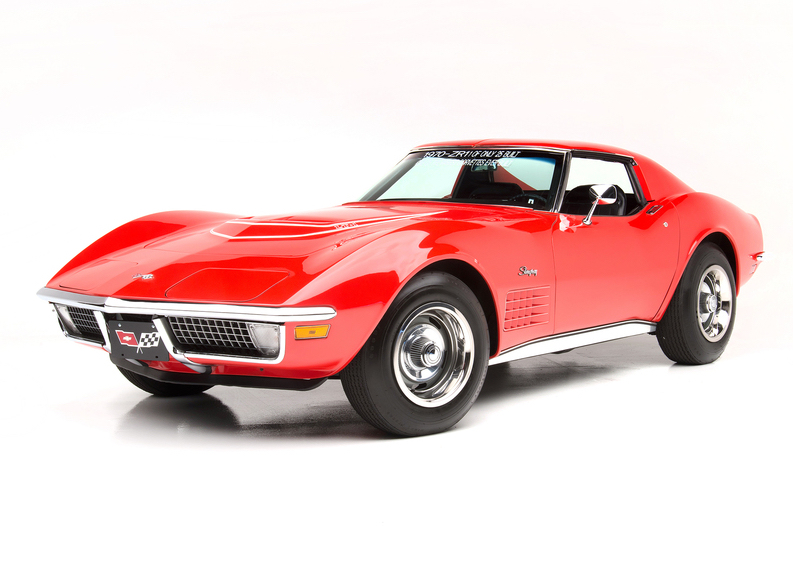
The big-block options were down to just one, the LS5 – a 454cu in motor producing 390bhp.
But big changes were in the offing, starting in 1971 with the engines down-tuned with decreased compression ratios to make the cars run on lower octane fuel.
By 1972, the SAE net horsepower measurement replaced the old SAE gross measurement, which saw the 454 big-block engine now rated at just 270bhp.
But the biggest change came to the car’s character in 1973, with Chevrolet advertising the switch to more of a grand tourer experience: “We gave it radials, a quieter ride, guard beams and a nose job.”
The new tyres, and redesigned body mounts reduced interior noise by as much as 40 per cent, while the new nose featured a lightweight, energy-absorbing urethane bumper to comply with federal 5mph impact requirements.
Like our illustration of the Chevrolet Corvette: the Sting Ray years at the beginning of the article?
Download a free high-quality poster version here.
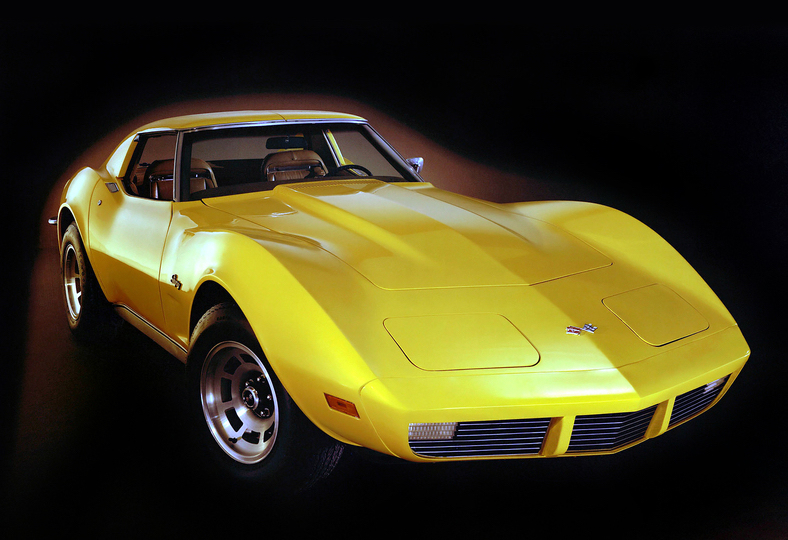
The big-block engines still produced plenty of torque though, and none of this supposed softening made the Corvette any less of a performance package.
A ‘74 Sting Ray equipped with the 195bhp small-block could hit 60mph in 6.8 seconds, not far off the 6.5 seconds of the ‘68 small-block rated at 300bhp. The Corvette was still a serious performer.
Changes to the rear end for 1974, featuring recessed lights, helped the car stay ahead of federal impact laws, and gave the car a fresher, more modern, overall look.
The C3 Stingray’s final years
“A more efficient Corvette” arrived in 1975, with a catalytic converter introduced to comply with federal emissions regulations. Only unleaded fuel could be used.
There were also newly-extended service intervals and electronic ignition as efficiency became more important than power.
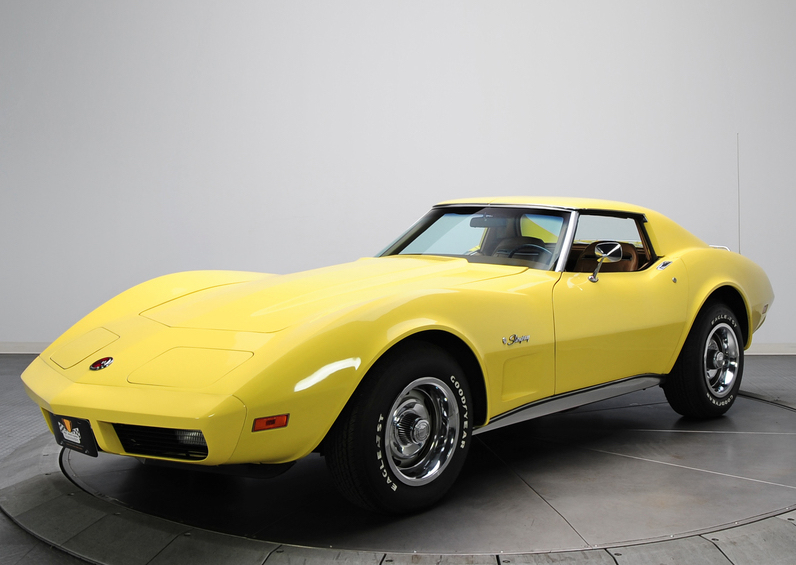
Indeed, the base engine was down to 165bhp, yet it still propelled the Corvette to 60mph in a respectable 7.7 seconds.
There was greater emphasis on comfort in 1976, as the fibreglass floor was replaced by lighter steel, which cut down sound levels in the cockpit.
Meanwhile, the driving position was improved, leather upholstery was made standard, and the centre console and gauges were restyled.
But it was the end of the road for the Stingray name – for 1977, the name disappeared from the front fenders, ultimately replaced by cross-flag emblems before the model year was out.
By now, half a million Corvettes had been produced since 1953, with the model’s 25th anniversary in 1978 heralding a new fastback rear design.
The C3 continued until October 1982, when it made way for 1983’s heavily-redesigned C4 model.
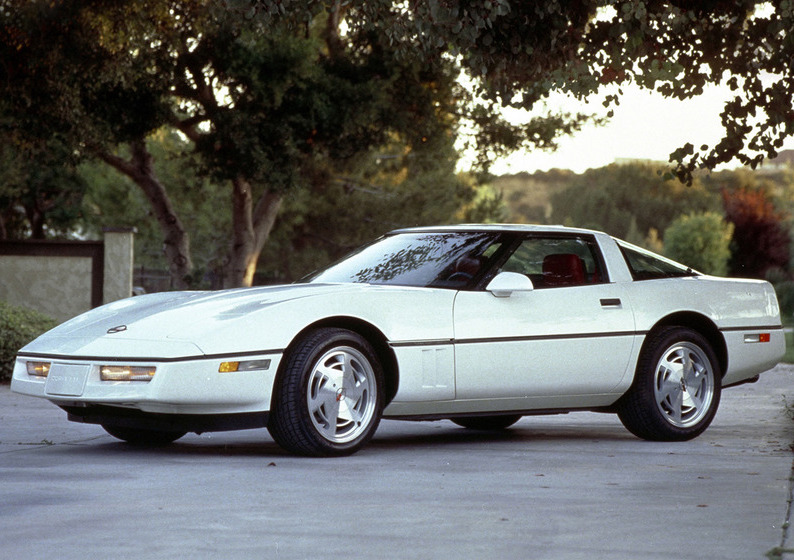
It wasn’t until 2014 that the Stingray name once again adorned the Corvette, as it still does today in its eighth incarnation.


